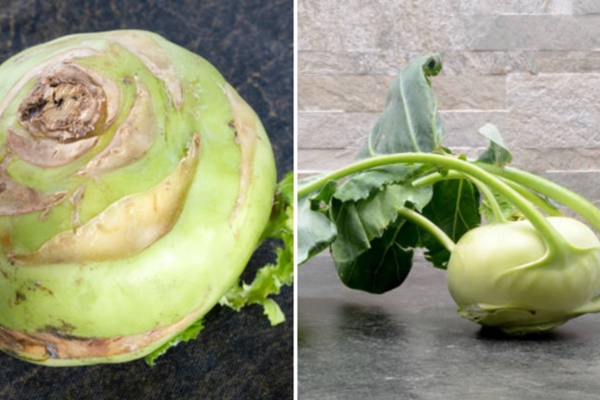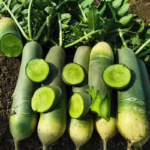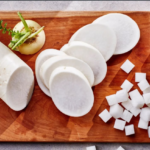In addition to cabbage soup and cabbage, turnips are also a popular root vegetable in winter. Turnips are crispy, sweet, and can be prepared in many dishes such as boiling, steaming, stir-frying, pickling, and stewing…
Turnips are also a healthy food with various benefits: boosting the immune system, improving vision; regulating blood pressure; reducing the risk of diabetes and obesity; promoting gastrointestinal health…
Are cracked or ugly turnips safer?
When it comes to choosing turnips, many people believe that cracked or ugly turnips are safer because they are not sprayed with pesticides. To determine if this viewpoint is correct, we need to understand why turnips crack.
Turnips are often cracked in the middle, creating an area without the usual protective skin, only a brown film on the outside. According to farmers, the reasons for turnip cracking include:
– This turnip variety has thin skin, and during unusual weather changes (salt mist, frost, or sudden heat), it is prone to cracking.
– Farmers apply excessive nitrogen fertilizer, causing the turnip to grow very quickly while the skin cannot develop accordingly, resulting in the inner flesh breaking the skin and causing cracks.
– The soil is dry, and if it is suddenly watered excessively, the plant will absorb too much water and cause the turnip to crack.
So are cracked or ugly turnips safer than plump turnips? For sellers, these turnips are considered second-class goods, imported and sold at lower prices. Although people often think that ugly-looking fruits and vegetables are safer than fresh and plump ones, this is not true for cracked turnips.

It cannot be affirmed that cracked or ugly turnips are safer than plump turnips. (Illustration: Pixabay)
If a turnip is cracked, the inner flesh is not protected and can come into contact with harmful substances from the environment. In particular, if the turnip is cracked due to excessive nitrogen application by farmers, it is even more dangerous because the excessive nitrogen will increase the nitrate content in the turnip.
However, turnips that are too plump, bright green can also be sprayed with chemicals.
Although it is difficult to rely on appearance to determine whether a turnip is safe or not, you should still avoid cracked turnips. It is best to buy turnips and other fruits and vegetables at reputable stores, especially those with clear origins and grown according to safe procedures.
How to choose delicious turnips
The most delicious turnips are usually medium-sized, ranging from small to medium-sized. It is best to choose turnips with a diameter of 7 to 9cm, which feel heavy and firm when held.
You should choose turnips that are still young, with a faint powdery layer on top and thin skin because these are young turnips without fiber and are very sweet. Large turnips with white skin have become old, fibrous, and no longer tasty and sweet.
In addition, you should choose turnips that are intact, not infested or crushed, with no rotten or chemical smells. Turnips with excessively shiny skin and abnormally dark color may have been treated with chemicals and growth stimulants.
Source: VTC






































